THIS CRAZY DAY IN 1972: A retired milkman becomes a hero
October 2-9, 1972
To access all website contents, click HERE.
Why do we run this separate item peeking into newspapers from 1972? Because 1972 is part of the ancient times when everybody read a paper. Everybody, everybody, everybody. Even kids. So Steve Bertolucci, the 10-year-old hero of the novel serialized at this Substack, read the paper too—sometimes just to have something to do. These are some of the stories he read. Follow THIS CRAZY DAY on Twitter: @RoselandChi1972.
FYI, this is one of those weeks where the news is top-heavy, with most of the big stories slamming down on Monday. That’s why it will take a little while to get to Tuesday.
October 2, 1972
Many days, it’s interesting to see all the front pages, and the sometimes vast difference between which stories get featured there or buried inside. Today, the major dailies are all on the same page.
Today’s headlines are the sensational end to another tragic murder story, which began in the papers on September 11.
Why is this the first TCD1972 readers are hearing about this murder? Because there’s been a wave of murders since September—especially of young girls and women. So many, I gave up deciding who to feature.
These recent murders are in addition to the high profile cases you’ve read about here, such as the Corbett family massacre in Barrington Hills, the brutal slayings of the Hawtree family in Monee, the heartbreaking case of young Rodney Harris, and the violent beating death of Judith Betteley in Grant Park, in broad daylight, on Labor Day as thousands of people celebrated the holiday nearby.
Next year, we’ll do a post on this murder explosion covering more individual cases, but particularly looking at the analysis in all the papers on the larger question:
Why?
Meanwhile, the headline medley above gives you an idea of the constant drumbeat of murder on Chicago front pages throughout fall 1972.
Today, we’ll first go over the initial reports on the murder of Barbara Flanagan and her 18-month-old baby Renee.
“The naked bodies of a young woman and a baby girl, believed to be those of a Norwood Park mother and her baby daughter who disappeared Saturday, were found today in a church parking lot in Mount Prospect,” opened Chicago Today’s coverage without a byline.
“They apparently had been slain.”
Barbara Flanagan’s husband and father-in-law arrived at the parking lot before the bodies were removed, just north of Community Presbyterian Church, 407 N. Main St. in Mount Prospect.
Dennis Flanagan “wept and appeared shaken….But police said no definite identification was made.” Both Barbara and baby Renee suffered “multiple bruises and severe swelling” of their heads.
Mount Prospect resident Don Dettmann, who lived across the street, called police after discovering the bodies next to his car early that morning.

“Mrs. Flanagan, with Renee, was seen about 3 p.m. Saturday getting into an auto with a man she believed was hiring her as a baby sitter,” wrote Today. “A CTA bus driver said she got off his Milwaukee Avenue bus at the end of the line at Imlay Street, 6500 North, and got into a blue 1965 Pontiac or Oldsmobile.
“The bus driver told police the man was slight and had reddish hair.”
Barbara Flanagan, 27, lived at 5744 N. Meade Ave. with daughters Renee, 7-year-old Laura, and husband Dennis, 30. Her father-in-law, Otis Flanagan, a retired Chicago police officer, lived upstairs.
Otis told police Barbara “liked to make ‘play money’ by working one day a week as a babysitter.” Barbara advertised on the bulletin board at her nearby Jewel, 5820 N. Milwaukee.
On Saturday, Sept. 9, Barbara told Otis a “Mr. Schramm” wanted her to watch his invalid mother and two children that day until 8 p.m., giving an address of 6540 N. Natoma Ave. Dennis Flanagan, a butcher, was working that day, so Barbara asked her father-in-law to watch 7-year-old daughter Laura while she took Renee with her to the job. She agreed with “Mr. Schramm” to take the Milwaukee Avenue bus to the end of the line, and then get a ride to his house. Barbara promised to call Otis with the phone number.
When Barbara didn’t call, Otis drove to 6540 N. Natoma.
There was no 6540 N. Natoma.

Neighbors told Otis Flanagan there was no Mr. Schramm on their block.
“Like thousands in Chicago, the bulletin board in the Northwest Side supermarket brings together people who don’t know each other,” wrote the Daily News’ Harlan Draeger the next day. “Mrs. Barbara Flanagan’s little card, offering to baby-sit, was an invitation to death.”
She had posted the card the day before, on Friday.
Autopsies showed that Barbara Flanagan was likely killed first. She “died from a sharp blow to the head or strangling…The daughter, Renee, died of suffocation caused by vomiting after she had been sexually molested,” the Tribune reported.
“This is obviously the work of a deranged mind,” the Trib quoted Mount Prospect Police Chief Bert Giddens.
Police were able to produce the sketch below based on the bus driver’s description. The bus driver initially identified the photograph of a “known sex offender” from the area, but couldn’t pick him out of a line up—or as they said back then, a “show up.”
This sketch appeared in all the major dailies, and presumably on every television newscast. Thanks to the bus driver, the physical description was precise: “35 to 40 years old, 5 foot 9, 150 pounds, with thinning reddish-brown hair,” per Today. “He wore a brown checkered sport coat, dark trousers and white shoes.”
Fast forward to October 2, and our retired milkman.
Chicago Today
by Michael Hirsley
“Police who had worked for weeks sifting information for clues in the murders of Mrs. Barbara Flanagan and her baby daughter, got the break they needed from a 66-year-old retired milkman,” writes Today’s Michael Hirsley, the only reporter who got the story straight from the milkman, interviewing him in his Park Ridge home.
“In the 17 months since Jack Walsh retired and took a part-time security job at the Marriott Hotel, 8535 Wiggins Rd., he has stopped a lot of people walking. around areas of the hotel beyond the lobby….Most of them he lets go with a warning.”

“Walsh decided early Saturday not to let Lee Clark Jennings go when he saw him on a hotel veranda. ‘I felt there was something wrong, altho I couldn’t pinpoint it,’ Walsh said as he recalled stopping Jennings. ‘He kept changing his story when I asked him about himself.’”
Walsh watched Jennings walking along the veranda looking inside hotel rooms. Jennings saw Walsh and tried walking away, but Walsh knew what stairwell Jennings would take to get away, and met him at the bottom. Jennings gave Walsh several stories that didn’t add up. That made Walsh especially suspicious, he told Today’s Hirsley, because unlike most people wandering around the hotel, Jennings wasn’t drunk.
“By staying friendly ‘and convincing the guy I just wanted to ask a few questions before letting him go, I got him to come to the security office with me,” Walsh told Hirsley. There, Walsh advised the other security men to call police.
Chicago Daily News
by Phil Blake
Here accounts diverge a bit. According to Today, police responded and found an attache case stolen from a guest’s room. Then, at the 16th District station, Patrolman Philip Boyle realized that Jennings’ car matched the description of the car Barbara Flanagan got into before she was murdered.
But according to the Daily News’ Phil Blake, responding officers Gerald Cygnar and Stanley Zyskowski “noticed Jennings’ resemblance to a description of the killer. When he was arrested at the hotel, police said, Jennings was carrying a 7-inch bread knife.
“A subsequent search of his car uncovered an auto gear shift lever wrapped with tape and a book titled: ‘How to Rape a Woman,’ police sources disclosed.”
Cook County State’s Attorney Edward Hanrahan, currently on trial for conspiracy to obstruct the investigation of his office’s 1969 pre-dawn raid on a Black Panther apartment that killed Panthers Fred Hampton and Mark Clark, held a press conference on Jennings’ arrest at a political rally held at a Lions Club at 4306 Wl North Av.
Hanrahan congratulated the assistant state’s attorneys who wrote up the search warrant for Jennings’ apartment, but Michael Hirsley notes he “did not, however, mention Walsh, the nonprofessional whose hunch provided police with a suspect to work with, and enough charges to hold him pending investigation into the murder case.”
At Jennings’ Logan Square apartment, 2605 N. Spaulding, Today reports police found the card Barbara Flanagan had posted on the Jewel bulletin board, and a picture of baby Renee.
The News says police recovered “papers that apparently belonged to Mrs. Flanagan” including identification cards and the picture of Renee, a stack of Bibles, and a note that “indicated Jennings planned to confess to the Daily News” and the Herald-American. The Herald-American is one of the previous names for Chicago Today, but since 1972 newspapers almost never name their competitors, the Daily News puts it this way: “a newspaper that no longer is published under that name.” That’s a lot of words in order to not say “Chicago Today.”
Oddly, the News, Tribune and Sun-Times all mention this note—but Chicago Today does not.
“A series of quotations about religion and sex were scrawled across the apartment walls,” per the Daily News.
The Tribune was more specific: “On a nearby wall were the red painted slogans: ‘For only 30 pieces of silver’ and ‘Two positives and two negatives equal the electric chair,’ and a painting of Christ which bore the inscription, ‘I am the way. John 14.6.’”
Jennings’ neighbors knew he was weird.
“In the walk-up building where he lived a block from Logan Square, Lee Clark Jennings was known as a cordial, but unnervingly intense man,” the News’ Phil Blake opened his story today.
“He always said hello, and he was always friendly,” a 22-year-old female neighbor tells Blake, “but when he spoke he stared right at you and his hands shook.”
One female neighbor told Blake that Jennings had tried to come into her apartment three times when she was alone. “He said who he was and asked, ‘Can I come in?’ Each time I told him no, and he went away.”
Chicago Tribune
by Michael Sneed and Carolyn Toll
“Neighbors described Jennings as an oddball,” wrote Michael Sneed and Carolyn Toll in the Trib. “‘He always stared at my 10-month-old baby girl and me,’ said Mrs. Sunny Tourkambour, who lives across the hall from Jennings…. ‘About a week ago, he told me he would have to go to jail for three days because he’d had a dream that he had parked his car illegally.’”
Jennings is a former Bible salesman and ex-convict, divorced by his wife eight years ago when he went to prison for armed robbery and rape in Illinois. He was transferred after six months from Menard Prison to the Illinois Security Hospital, which released him this past June. Per the Daily News, the hospital won’t say who authorized his release.
Hirsley writes that Hanrahan told reporters “it is believed that Jennings and Mrs. Flanagan met recently at a psychiatric clinic on Milwaukee Avenue. He said it was not the Chicago Read Zone Center, where Mrs. Flanagan underwent voluntary treatment and from where she was an outpatient”.
But per the Daily News, Sun-Times and Tribune, Hanrahan did say Jennings may have met Barbara Flanagan at the Read Center, because they were both outpatients there. Per the Tribune, Dennis Flanagan “told police that his wife had suffered from depression for at least five years. He said she voluntarily sought treatment at Read”.
by Art Petacque and Dennis D. Fisher
Chicago Today, the Sun-Times and Tribune all report that police say Jennings gave an oral confession besides the incriminating note in his apartment.
“Lee Clark Jennings, 29, a salesman of Bibles and other religious literature, has admitted in an oral statement that he murdered Mrs. Barbara Flanagan and her baby daughter, police said Sunday,” write Art Petacque and Dennis D. Fisher.
“Jennings told of luring Mrs. Flanagan” to the bus stop where he picked her up. “They said Jennings told them he took his victims to his apartment at 2605 N. Spaulding, where he killed them. He said he then took their bodies to the parking lot of the Community Presbyterian Church….because ‘I wanted to take them to a church of their own denomination.’”
The Flanagans actually belonged to St. Luke Evangelical Lutheran Church at 1500 W. Belmont.
October 2, 1972
by Jack Griffin
“The sweat was steaming off Abe Gibron, and for the first few moments he was silent, studying the clipboard that held some mysterious notes, letting some of the bitterness of defeat squeeze out of him,” writes Jack Griffin, who must have had a good novel in him, judging from his writing.
“‘We got beat, that’s what happened,’ he said finally. ‘It’s a shame, considering the way most of them played. They played their hearts out, those who played.’”
And for once, “it was the defense, so shining last week, that failed the Bears and they fell 38-24 to Detroit Sunday at Soldier Field.”
“The Lions scored the first five times they had possession of the football, four touchdowns and a field goal. The Bears offense tried to match them, and almost did.”
“The bitterness that stayed with Gibron began to well up in him again and then it spilled over, and he trembled as he talked.
“‘I don’t want to take off on officials,’ he said. ‘I’m not specifying this game, or any official, or any game. But they have been gutless, inconsistent, and they have been playing favorites.’”
According to Gibron, the officiating has “controlled the outcome of too many games these first three weeks,” though he won’t name names or games.
Meanwhile, it was quarterback Bobby Douglass’ best game, writes Griffin. He was “spectacularly durable, bounding into and around or over Lion tacklers…until he got 97 yards rushing on 12 carries. He even passed for 83 more, with eight completions out of 16 attempts.”
“And they even got 28 yards out of Dick Butkus on a rush from a fake punt formation.”
The game was dominated by the offense, writes Griffin, but in the fourth quarter the Bears were “only a touchdown back until an interception shut them off and led to the final Detroit touchdown.”
Gibron, Butkus and the team deny the game was affected by Dick Butkus’ best-selling book “Stop-Action” with Chicago Daily News reporter Robert Billings, a book stuffed with insults, and some of the sharpest pointed right at the Lions and Butkus’ opposite number there, Mike Lucci. But the issue still requires a separate article.
by James C. Mullen
“Mike Lucci, the blue-eyed Italian who plays middle linebacker for the Detroit Lions, doesn’t think much of Dick Butkus as an author.
“Stripped to the waist in the Lions dressing room, Lucci issued a scathing verbal review of ‘Stop-Action,’ the Butkus tome that was published a week ago.”
In the book, Butkus called the entire Lions organization “jerks,” and said of Lucci personally:
“I’m damn sick of this whole Detroit situation. For the last couple of years now this Lucci has been trying to make some sort of reputation for himself by knocking me. I wish to hell he would try to make the Pro Bowl on the field instead of with his mouth.”
“‘Only a jerk writes like that,’ Lucci said. ‘He ought to keep his mouth shut and play football. That’s what he gets paid for….I’ve been playing in this league for 11 years, and I don’t have to try to prove myself to anybody….Butkus called our team jerks. But I just consider the source.”
“Across the field in the Bears’ dressing room, Butkus was pulling on a black shirt and as he reached for a white silk tie, he was asked if he thought the pregame comment on his literary efforts backfired on the Bears.
“‘The book didn’t beat us,’ Butkus said. ‘[Lions quarterback Greg] Landry did. You guys started all this stuff. You dream up what you want to say. Don’t ask me any questions.”
“As [Daily News reporter] Robert Billings, co-author of the Butkus book stood by with visions of dollar signs dancing merrily in his head, Butkus warmed to his subject.
“‘I don't want to say anything about it. I know you want me to, because you need something to fill your columns. And I appreciate the exposure you’ve given the book.
“‘I think what I said was blown out of proportion. I don’t care what the Lions are saying. If they want to carry it over that’s their business.’”
Though the Lions won the game, Mullen writes that “Lucci and Butkus played to a virtual stand-off on the field. Butkus was credited with two solo tackles, 13 assists and one broken up pass. Lucci had a pair of solos, 10 assists and one interception, which set up quarterback Greg Landry’s final touchdown.”
Chicago Daily News
by Ray Sons
Ray Sons include a fun quote on Dick Butkus from Lions coach Joe Schmidt: “We won, so I guess he didn’t dod too bleeping well, did he?”
Lion linebacker Ed Flanagan looked innocent and said he was just happy to have made Dick Butkus’ all-world team of jerks, per Butkus’ “Stop-Action.”
“Behind Flanagan’s cherubic smile was the memory of his block on Butkus that knocked Dick out of Greg Landry’s path on Landry’s 13-yard sprint up the middle for the final Lion score,” writes Sons.
He thinks “it looked suspiciously as though the Lion game plan had been designed to ram the ball right up the middle and down Butkus’ throat most of the afternoon.” Which Coach Schmidt denied.
Sons notes that Butkus “was abrupt with reporters after the game, which isn’t like him.” Writers also wanted to ask Butkus about “the game’s most spectacular play,” writes Sons, in which Butkus “had carried the ball himself from punt formation…gaining 28 yards.” But Butkus wasn’t talking.
And “Butkus, Lucci and Flanagan, all captains, did not shake hands during the flip of the coin before the game.”
October 2, 1972
Chicago Daily Defender
Last year this convention focused on Black businesses was called “Black Expo ‘71.” This year, it’s PUSH Expo ‘72, since the Rev. Jesse Jackson left SCLC’s Operation Breadbasket and founded his own group, People United to Save Humanity.
Here, PUSH says attendance reached 750,000 at the International Ampitheatre—though the Sun-Times quotes their spokesman putting it at 500,000—with 500 companies exhibiting.
Understandably, celebrities always overshadow business.
“By far the biggest single smash hit performance at the exposition was the ‘Jackson Five Review,’ held on Saturday afternoon,” writes the Defender. “An unofficial estimate of 50,000 people jammed the exposition hall for the performance and the crowd was ‘just packed to the rafters,’ according to Paul Walker, PUSH spokesman.”
“Sammy Davis Jr. and Robert Flack performed in the weekend shows, also to near record crowds,” the Defender continues in this unbylined article. “Walker said Sammy was ‘well received’ by his audience and that when asked to do an encore performance he was caught unprepared. Walker noted that Sammy was surprised by his warm reception and commented, ‘Well, gee, I didn’t know you would let me sing.’”
Why was Sammy Davis Jr. surprised to get a warm welcome at PUSH Expo ‘72, even though he was publicly scheduled to perform several months ago?
Sammy openly supports President Richard Nixon for re-election this year, and whether or not Black voters should go Republican is a hot debate. But that’s not really the problem. In Chicago, for instance, prominent Black educator Dr. Charles Hurst, president of Malcom X College, has said he’s voting Republican this year. In September, the head of Boston’s NAACP chapter announced he was joining the Republican Party, pointing out that Nixon has appointed seven Black Ambassadors. So Black Republicans are a minority in a minority, but they aren’t automatic pariahs in the Black community.
What a lot of people can’t get past is the hug Sammy gave Nixon at a Miami concert held during the Republican National Convention this summer.
On August 28, frequent Daily News letter writer H.J. Oettinger wrote in:
And on August 30, the Defender’s Charlie Cherokee Says column included this item:
And yes, Younger Readers, the Defender ran a social/political gossip column called “Charlie Cherokee Says,” starting in the 1940s. See this January 4 item for some background.
October 2, 1972
Chicago Daily Defender
no byline
When Machine politician U.S. Rep. Ralph Metcalfe broke with Mayor Daley and the Democratic Machine over the issue of police brutality in Black neighborhoods late last April, it wasn’t likely the two would be having a beer together anytime soon. This has been brewing, so let’s go over the background. Skip ahead if you’re up on it.
Metcalfe is a legendary Black Chicago politician who succeeded the equally legendary William L. Dawson in Congress after serving a stint in City Council. Before politics, Metcalfe was an Olympic track and field sprinter who held a world record in the 100-meter dash, and came in second in the 1932 and 1936 Olympics—the latter, running second to Jesse Owens in Berlin.
In late April, Metcalfe quickly formed the Concerned Citizens for Police Reform with other Black leaders and presented Police Supt. James Conlisk with the list below of six demands, including a May 31 deadline.
Mayor Daley never directly answered Metcalfe’s demands, and even ignored a telegram invitation and press conference plea to attend a May 2 meeting of Black leaders to discuss police brutality. Instead, Mayor Daley hosted his own mass meeting in City Council chambers the next day May—and he invited Metcalfe at the last minute. Black leaders mostly boycotted Mayor Daley’s meeting. “We will not go to him [Mayor Daley] until he comes to us in the black community where the problem is,” Metcalfe told reporters.
On May 31, after no response from Mayor Daley, Metcalfe held a giant rally at Mt. Pisgah Baptist Church. The stage featured an empty chair for Daley. As the Defender’s June 1 cover below indicates, Metcalfe’s speech that day probably clinched his estrangement from Mayor Daley and the Machine.
See April 25, May 2, May 3, May 4, and May 6-7 for the beginning of Metcalfe’s movement and Mayor Daley’s mass meeting; May 12 and 13 for Supt. Conlisk’s hastily organized and disastrous neighborhood meetings on police brutality; May 24 for “Metcalfe: Daley must meet our deadline”; May 30 and June 1 for Metcalfe’s May 31 rally; and July 18 for the start of Metcalfe’s own hearings on police brutality held at the Dirksen Federal Building.
Today’s Defender article, with no byline, begins:
“Being black isn’t always rewarding and if you’re a United States Congressman who for years has played an active role in the Democratic apparatus in Chicago, being black is also costly.
“When U.S. Rep. Ralph H. Metcalfe (D-1st) told some 2,000 persons during a rally for The Concerned Citizens for Police Reforms, that ‘it’s never too late to be black,’ the political machinery had already been set into motion to strip him of all his power within the machine.”
“Now, Metcalfe feels, he’s been pushed far enough. He is prepared to return some of the blows he’s received during the past six months.”
Metcalfe details these blows to the Defender:
First, after Metcalfe’s initial April meeting with Police Supt. James Conlisk, he says city building inspectors visited his 3rd Ward headquarters and found “minor violations”.
Building inspectors as agents of Machine revenge are a frequent topic for Mike Royko. See:
November 17, 1971, “A landlady vs. City Hall”
November 22, 1971, “A landlady cries out”
December 22, 1971, “Score one for the little guy”;
May 4, “Afraid to die, afraid to live”
May 19, “Gimme Squad strikes again”
Then, Metcalfe says, his police bodyguards were pulled. (Other reports said Metcalfe had multiple bodyguards and lost two—it’s unclear to me if he was left with no bodyguards.)
Now, Metcalfe has lost patronage jobs, the magical fountain from which all Machine life flows.
“I’ve lost some jobs because of the (Daley ordered) financial austerity program,” Metcalfe tells the Defender. “But they’re about five jobs that they’ve simply taken away from me and given to other ‘more loyal’ committeemen. The word is out not to give me any jobs.”
Plus, “some loyal Metcalfe party members” claim Republicans are colluding with the Machine, because Metcalfe was told he had no opposition in the upcoming election, even after the primary. But it turns out a “Dr. Lewis H. Coggs” got 27 write-in votes in the primary, and will be on the ballot.
Metcalfe blames Mayor Daley, an entirely rational and logical conclusion.
“He apparently feels that I should just be totally committed to him even if it’s not in the best interests of the people of Chicago,” Metcalfe tells the Defender.
October 3, 1972
Chicago Today
no byline
“The Illinois Commission on Mental Health will investigate the circumstances under which Lee Clark Jennings, killer of a mother and her daughter, was released after being treated for mental illness,” reports Today, along with other “premature releases” of mental patients.
But given that Jennings had not been convicted of murder, it’s not shocking that he was released. What’s more interesting is the fact that Chicago police arrested him on September 18, but only for disorderly conduct.
“A week after the brutal murders, Jennings, 29, was arrested while calling attention to himself by making mud pies in Garfield Park,” writes Today. “During subsequent questioning, he mentioned the murders to the policemen.
“The guy who killed that woman and child oughtn’t to be allowed out on the street,” Jennings told Patrolmen Dwight Bleke and William Conroy. They stopped Jennings because he was “cavorting barefoot in the rain at 9:10 that morning in Garfield Park, at about 3400 W. Madison St.
“Tho neatly dressed, he was covered with mud and was making mud pies as the police approached.
“‘I love to play in the park when it’s raining,’ he told them.
“‘He sure acted flaky,’ Bleke said. So they took him to the station for questioning.”
At the station, Jennings “lapped water from his cell toilet bowl ‘like a dog,’” per police.
“During the questioning, the policemen noticed a vague resemblance between Jennings and a police artist’s sketch of the Flanagan slayings suspect. Conroy said they sent for the file on the case and compared the description, but couldn’t positively ‘make’ Jennings as a suspect.”
Both the watch commander and a homicide investigator called in also didn’t think they could definitely ID Jennings for the Flanagan murder. Then he started drinking out of the toilet, so they sent him to the House of Correction’s Bridewell Hospital for observation. He was out by Sept. 21, and posted bond for an Oct. 5 court appearance.
Do you dig Chicago history, but don’t have time to read a whole book about it? Get started with “When Chicago Wasn’t Chicago,” one of this site’s Notes Chapters. At that time, even this early view of Oak Street Beach was nowhere to be seen.
October 3, 1972
Chicago Today
For much of the 20th century, South Side brides went to one place: Margie’s. Though I notice they don’t use an apostrophe in the name here.
Note also that Margies is located in River Forest and “Beverly Hills.” How many Younger Readers don’t know that “Beverly” is short for “Beverly Hills”?
Margies later changed locations, and went bankrupt in 1997.
October 3, 1972
Chicago Today: Allstate Insurance ad
Younger Readers, this ad stopped me for the pictures of now extinct car bumpers, sometimes called fenders. You have never seen them, probably.
Bumpers/fenders were heavy pieces of metal attached to the front and back of cars, so when somebody else bumped you while parking, you didn’t end up with a scratch that cost $500 to fix. The bumper took the hit, and you had to practically crash into a streetlamp to seriously dent a bumper.
I wonder if Older Readers agree that bumping real bumpers was a massive conspiracy between car manufacturers and the automobile repair industry.
October 3, 1972
Chicago Daily News
by Bill Christine
Remember Dick Butkus is hosting a weekly Monday lunch at the Playboy Club after Bears home games? Bill Christine says it’s worth paying $5 for “common lunch fare”—that’s about $34 in 2022 money.
“Dick Butkus, for seven years No. 51 on the field but an unknown quantity to the public off it, has emerged from his self-styled exile and seems to be enjoying it,” writes Christine. “So, for that matter, does the public.
“At his weekly luncheon appearance at the Playboy Club, Butkus planted himself in approximately the same place where mimic David Frye currently performs and continued to wax controversial.
“There was nothing imitative about the Butkus delivery, which included sarcasm, spontaneous wit and insight. For more than an hour, Butkus entertained a room filled almost to capacity”.
Just as Abe Gibron focused on official calls, Butkus had words for the officials “who didn’t call a penalty on Detroit in the Lions’ 38-24 victory Sunday. According to Butkus’ sliding scale, the games’ officials rank somewhere between Lucci and the rest off the Lions”—all called “jerks” in Butkus’ best-selling book, “Stop-Action.”
“They called a 15-yarder on me for hooking (Craig) Cotton,” said Butkus. “I clotheslined him, but I’ve got a right to hit him before the ball’s thrown. I started to say something, and the jerks said it would be 15 yards if I said one more word. At least they usually let you talk to them.”
October 3, 1972
Chicago Today
I don’t have the heart to create a Chicago Today Death Watch logo. If I did, it would start today.
“CHICAGO TODAY will be published as a five-day evening newspaper early in 1973,” the paper tells its readers. “This was announced today by Lloyd Wendt, editor and publisher…Chicago Today readers will be able to continue to enjoy their favorite weekend features, columnists and comics in the Saturday and Sunday editions of the Chicago Tribune.”
The Tribune’s publisher says “many” of Today’s features, columnists and comics will be “incorporated” into the Saturday and Sunday Tribune, which will be delivered to Chicago Today home subscribers. Most readers here already know that the Tribune owns Chicago Today.
What Tribune features may be dropped to fit Chicago Today items? Unknown.
Back to the main point, though: Chicago Today can’t afford to publish seven days per week, or even for a single weekend edition like the Daily News and the Daily Defender.
Naturally Lloyd Wendt puts the best spin on the situation: Publishing seven days was expensive, and this will let Today “strengthen our position as the leading evening newspaper in Chicago,” claiming that “trend lines for a daily publication are running in our direction,” by which apparently he means weekdays.
Recall that the broadsheet Chicago’s American became the tabloid Chicago Today on April 28, 1969. “We seized total circulation leadership from the News in March, 1971,” says Wendt, “and in the important city and suburban market, we now lead the News by 37,445 copies.” He means the Daily News.
On Sunday, Today will run this article again with an emphasis on the idea that the remaining five-days-a-week Today is going to be improved once the paper lops off the lame weekend editions holding it back.
“One improvement already decided on is an expanded Friday paper. It will be, in effect, a weekend paper devoted to fun, recreation, the home, family life and other interests that occupy our readers as they relax or travel on Saturday and Sunday.”
Since Chicago Today runs full-page ads every month touting its gains in total daily advertising, we already knew their ads have increased for the past 20 months. I can’t seem to find the most recent one, so here’s the ad from July:
But you only have to look at any issue of the Daily News to see that Today’s total advertising remains paltry in comparison.
This article also explains the ad that ran in the Oct. 1 Chicago Today:
Chicago Daily News
The Daily News matter-of-factly reports on the publishing reduction for its direct afternoon competitor in a brief item, using the same quotes from Lloyd Wendt. But somehow, they forgot to mention Today’s circulation numbers.
Sun-Times
The Sun-Times runs a rather lengthy article with all the same points and Wendt quotes, but wades deeper into the weeds:
“Wendt said he told Today’s editorial personnel at a staff meeting that ‘some people will lose jobs.’ In an interview, Wendt said he could not estimate the extent of the personnel cutback.
“‘But we hope to keep it at a minimum,’ he said. ‘For example, we expect to have a larger complement working on the five-day operation than at present.’
“He estimated that Today now has about 220 editorial staff members. He said it is hoped that various operations of the Tribune Co. will be able to absorb the personnel dropped by Today.
“Reports of a major cutback at Today began circulating last month.”
“The demise of Today’s Sunday edition will leave Chicago with two metropolitan Sunday newspapers—The Sun-Times and the Tribune. Today’s dropping of its Saturday edition will leave three major Saturday papers—The Sun-Times, The Daily News and the Tribune.”
The Sun-Times even goes over the paper’s history. Past names: Chicago’s American, the Chicago American, the Chicago Herald-American and the Herald & Examiner—tacking on “to name a few,” as if there were about ten more. Nearly all those iterations were owned by Hearst, and the Tribune bought the paper in 1956 “for an undisclosed price.”
In 1956, the then-Chicago American had a 706,407 Sunday circulation, compared to Chicago Today’s Sunday circulation of 433,516. The Sunday Sun-Times is currently at 744,532, and the Trib of course leads at 1,005,120.
October 3, 1972
Chicago Today
A new promo for sports editor and columnist Rick Talley, a good sign for him as Today downsizes.
October 3, 1972
Chicago Daily News: Blood Crisis
by Rob Warden
“Blood saves a life every two or three minutes in the Chicago area,” Rob Warden writes today in the first of a series of articles this week on Chicago blood donations—because the situation is dire.
“Bobby Irvine, 10, has hemophilia. He will die unless he has about 300 pints of blood a year.…Michele Jordan, 4, has leukemia. She needs blood less often, but if it’s not there when she needs it, she will die.”
In three weeks, writes Warden, “if nothing dramatic happens, there won’t be enough blood in the Chicago area for all who need it. The source of about half of the blood needed in the metropolitan area dried up last weekend.
“This happened because a state law went into effect requiring that all blood be labeled as either ‘blood from volunteer donor’ or ‘purchased blood.’ The law practically eliminates purchased blood because hospitals would be vulnerable to damage suits if a patient got sick or died from hepatitis passed through transfused blood.”
About half the 250,000 pints of blood used every year in Chicago has, until now, come from blood donated for money, he writes. That’s a problem. People who sell their blood for money tend to come from places like Chicago’s old West Side Skid Row, still going strong in 1972. There, hepatitis “is particularly high among heroin addicts” and alcoholics, who get $10 to $25 per pint.
That’s $67.50-$168 in 2022 money, so the temptation to be less than truthful about personal habits and medical history is strong—and there’s no test to screen for hepatitis in donated blood.
Again, Warden notes, Chicago’s blood supply will dwindle in three weeks if volunteers don’t step up. So the Daily News “is launching a public appeal to help find residents of the Chicago area who would be willing to give blood to save a life.”
By the way, reporter Rob Warden would go on to launch, edit and publish Chicago Lawyer, where he focused on Illinois death penalty cases. His work there lead to 13 exonerations, including the famous case of Gary Dotson, the first person ever exonerated via DNA evidence. From there, Warden co-founded Northwestern Law School’s Center on Wrongful Convictions, which he led for 16 years, overseeing 31 more exonerations. He’s now executive director emeritus. Finally, he co-founded Injustice Watch, a nonprofit journalism organization “that conducts in-depth research exposing institutional failures that obstruct justice and equality.” Warden instigated much of the work that led to Illinois Gov. George Ryan’s suspension of the death penalty here in 2003, leading to its complete abolition in 2011.
Warden did all that after the Daily News folded in 1978, so at least some good came out of that.
Chicago Sun-Times
Starting today, the Sun-Times “will publish a daily gauge of the blood supply in Chicago—the number of pints used to provide transfusions in hospitals compared with the number of pints collected from volunteer donors.”
“On Sunday, when only emergency surgery is performed, the demand exceeded the supply by 25 pints, according to estimates of the Metropolitan Chicago Blood Council.”
Chicago Daily Defender
No byline
“Members of Operation Survival yesterday kicked off a campaign to provide more blood donations for medical and health facilities within the black community.
“Emphasizing that a critical blood shortage may develop in the black community within the next few weeks as a result of a recent Illinois law requiring the labeling of ‘purchased’ blood—a primary source for black medical facilities—the group stressed that the only way to combat such shortages would be an aggressive campaign to ‘motivate our people to give blood in this program.’”
The nonprofit Chicago Blood Donor Service will provide the medical personnel to visit businesses in the Black community for blood draws. Operation Survival held a press conference at the Sheraton-Chicago hotel, 505 N. Michigan, where Defender managing editor Thomas Picou, Russ Meek of Search for Truth Inc., and PUSH representative Rev. Henry Hyde all donated blood.
October 3, 1972
Chicago Today
The police shakedown scandal continues nearly every week in dribs and drabs as this cop refuses to testify and that cop gets convicted for shaking down bars and other small businesses.
October 3, 1972
Chicago Daily News: WVON ad
WVON is running this ad here and there in most of the papers.
October 4, 1972
Chicago Today
Good luck on the office pool this week.
October 4, 1972
Chicago Daily News
Reader’s Digest is running this tiny ad in all the major dailies this week. It’s 1972, but still, the term “menstruation” or even “period” is apparently too out there.
October 5, 1972
Chicago Today: Maurice McCaster
by Jeff Lyon
“The phone call Maurice McCaster placed from a Melrose Park tavern was probably the most expensive he ever made,” writes Jeff Lyon.
“It cost him two feet of intestines, his appendix, several pints of blood, 11 days in the hospital, and lost days on his job as a brakeman for the Chicago and North Western Railway.”
McCaster, 21, just got out of the hospital after being attacked on Sept. 23 in an “apparently racially-motivated shooting” at the Boar’s Head Inn, 4301 Lake St, in Melrose Park.
On October 5, McCaster was on his way to the Melrose Park police station to try to identify his assailants. McCaster, who’s Black, tells Lyon that he was on his way home to the Near West Side from his job in the Proviso rail yards when his car broke down near the Boar’s Head. He entered the bar, asked for change to use the payphone, located in a separate vestibule through a door. McCaster called his father-in-law for a jump, but when he hung up, he was surrounded by about 12 white men and women who started bumping into him.
“One said if I didn’t like it I should step outside,” McCaster tells Lyon. “I didn’t say anything to them because I was quite scared. I went for the door to get back into the bar.
“At that point someone hit me with a steel pipe or something hard and heavy, and then I was kicked to the ground. Then someone shot me in the back.
“I didn’t put up any struggle, and instead I tried to pull the bar door open because I knew I was finished if I didn’t make it. Somehow I made it, and I lay on the bar floor for a long time bleeding. I could vaguely hear people cursing me and saying ‘let him die.’
“Thank God somebody called the police, but I think it was 45 minutes before they came for me. That’s what my father in law said.” The person who called the police visited McCaster in the hospital.
McCaster described the assailants as “hillbillies” with southern accents. His doctor says the bullet entered McCaster’s back, exited through the front, and required “considerably surgery to repair his intestines.”
“I have advised him to take it very easy,” said the surgeon.
Oddly, Chicago Today is the only Chicago paper to cover McCaster’s attack, ever. He’s definitely not in the Tribune, Daily News or Sun-Times databases (a helpful librarian checked the Sun-Times’ 1972 database for me, not available to patrons). While the Defender’s database can sometimes miss dates here and there, if the paper had covered McCaster more than once, it would be unlikely for his name to never show up in the database.
October 5, 1972
Chicago Today: Chesterfield cigarette ad
October 5, 1972
Chicago Daily Defender: Full page Virginia Slims cigarette ad
October 5, 1972
Chicago Daily Defender
Everyone hates the phone company. This is the latest in a series of ads to make you hate them less. And yes Younger Readers, it was—especially in poorer areas—a nice surprise to find a payphone that worked.
October 5, 1972
Chicago Today: Bob Hope Special ad
Chicago Daily News: Another Bob Hope Special ad
October 6, 1972
Chicago Daily News
by Jay Sharbutt (AP)
How did a temperamental chess champion and a mustachioed Olympic gold medalist do on Bob Hope’s “special”?
“When it was all over, Fischer emerged as an excellent chess player, Spitz a superb swimmer and Hope a master of timing—both in comedy and in getting the two champions on his show at the peak of their popularity.
“They may never make it big as comedians, but Spitz and Fischer plunged into their skits with relish.
“Spitz, who ultimately intends t o become a dentist, donned a white smock ahead of schedule to do battle with Hope’s molars….One wrong tooth later, Spitz yanked out what he hoped was the right one. Complained Hope: ‘That’s not a tooth. That’s a filling,’
“Replied Spitz: ‘That’s my Olympic training. Always go for the gold.’”
The Spitz sketch isn’t on YouTube, but here’s Bobby Fischer. Fischer definitely did the best you could expect, occasionally with a good delivery. Bob is Bob. The jokes, Older Readers can probably imagine before they click. I found it fascinating, nonetheless, from a historical aspect.
And now, just because, Bobby Fischer solves a puzzle on The Tonight Show—after Johnny compliments him for his performance on the Bob Hope Special.
October 6, 1972
Chicago Today
Remember the craziness earlier this year when author Clifford Irving insisted he’d written Howard Hughes’ autobiography, which he’d sold to a credulous McGraw-Hill? I’ll do a post next year catching you up on all that, because the Irvings did finally admit they were lying, pled guilty, and went to jail in staggered sentences so their kids could remain with one parent at a time. Edith went first for a short sentence, so of course she wrote a prison diary. We’ll get to her amazing insights too.
October 6, 1972
Chicago Today
The controversy rages over whether Chicago consumers should be able to buy freshly cut meat after 6 p.m.
October 7, 1972
Chicago Today
50 years late, A-1 Carpet Cleaning got my attention with this tiny ad tucked at the bottom of a page.
October 7, 1972
Chicago Today
Mr. Botzek couldn’t even conceive of cup holders.
Here’s a tutorial on the “vent window” Mr. Botzek mentions, for Younger Readers who can’t imagine what it means and Older Readers who miss them as much as Mr. Botzek.
October 8, 1972
Chicago Today: Empire Carpets
This company does not use the word “SEX” in a capital letters. Instead, Empire takes out a full page ad, and more importantly perhaps, someone is going to come up with the most perfect ad jingle for its phone number.
And this carpet cleaning company got a lot attention with a few well-placed signs around town, plus a few newspaper coupons such as this one today.
Dig the news from 1972? Don’t miss Mike Royko 50 Years Ago Today.
October 8, 1972
Chicago Today
Wondering what to watch this week? Here you go.
They could only show “The Great Escape” on Saturday nights because it was so long, but personally, I would rate that James Garner’s best movie.
October 7-8, 1972
Chicago Daily Defender: Full page ad for Gale Sayers on Channel 2
October 8, 1972
Chicago Today
October 7-8, 1972
Chicago Daily Defender
Don’t you wish you were going out this weekend in 1972?
Did you dig spending time in 1972? If you came to THIS CRAZY DAY IN 1972 from social media, you may not know it’s part of the novel being serialized here, one chapter per month: “Roseland, Chicago: 1972” —FREE. It’s the story of Steve Bertolucci, 10-year-old Roselander in 1972, and what becomes of him. Check it out here.






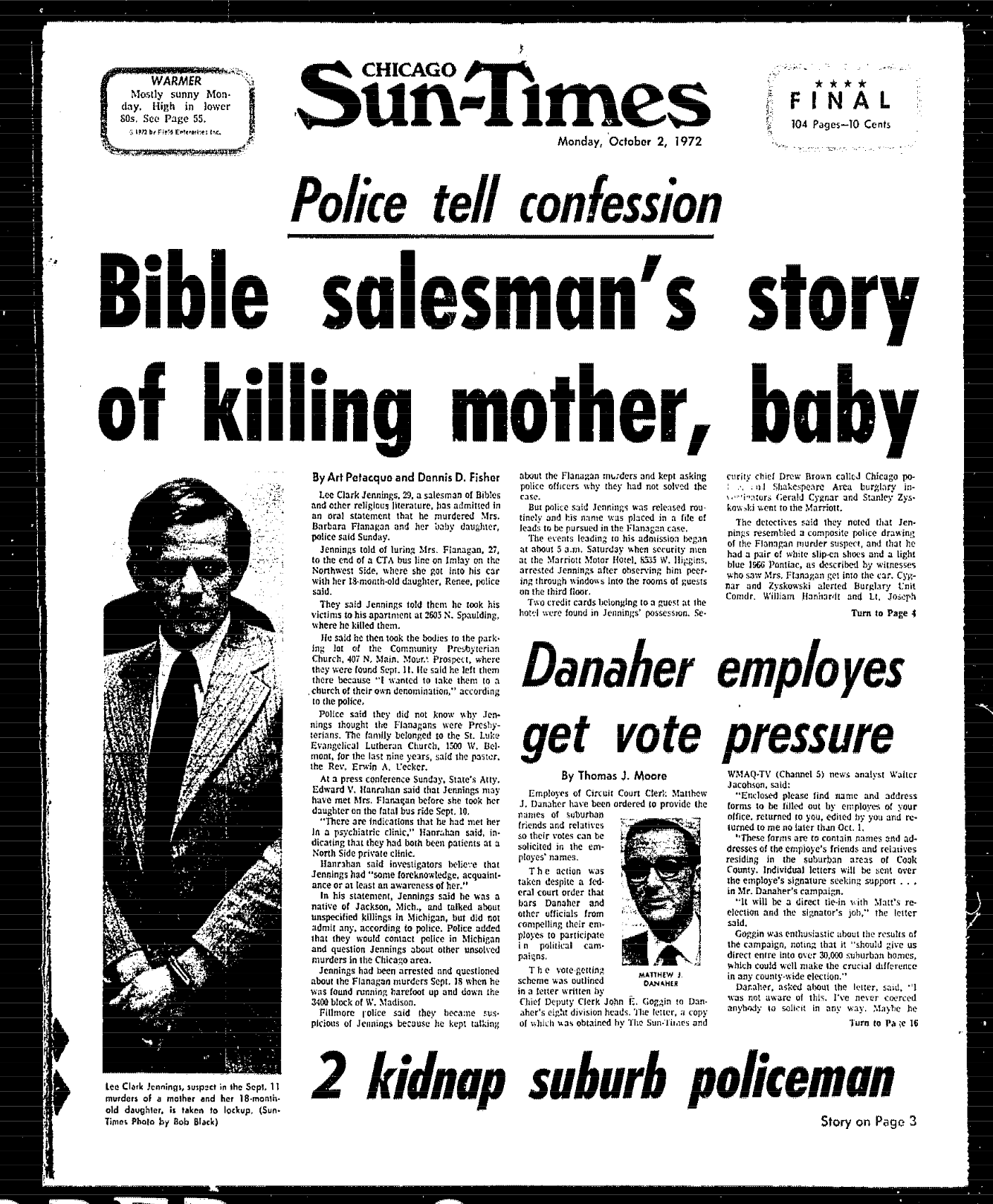



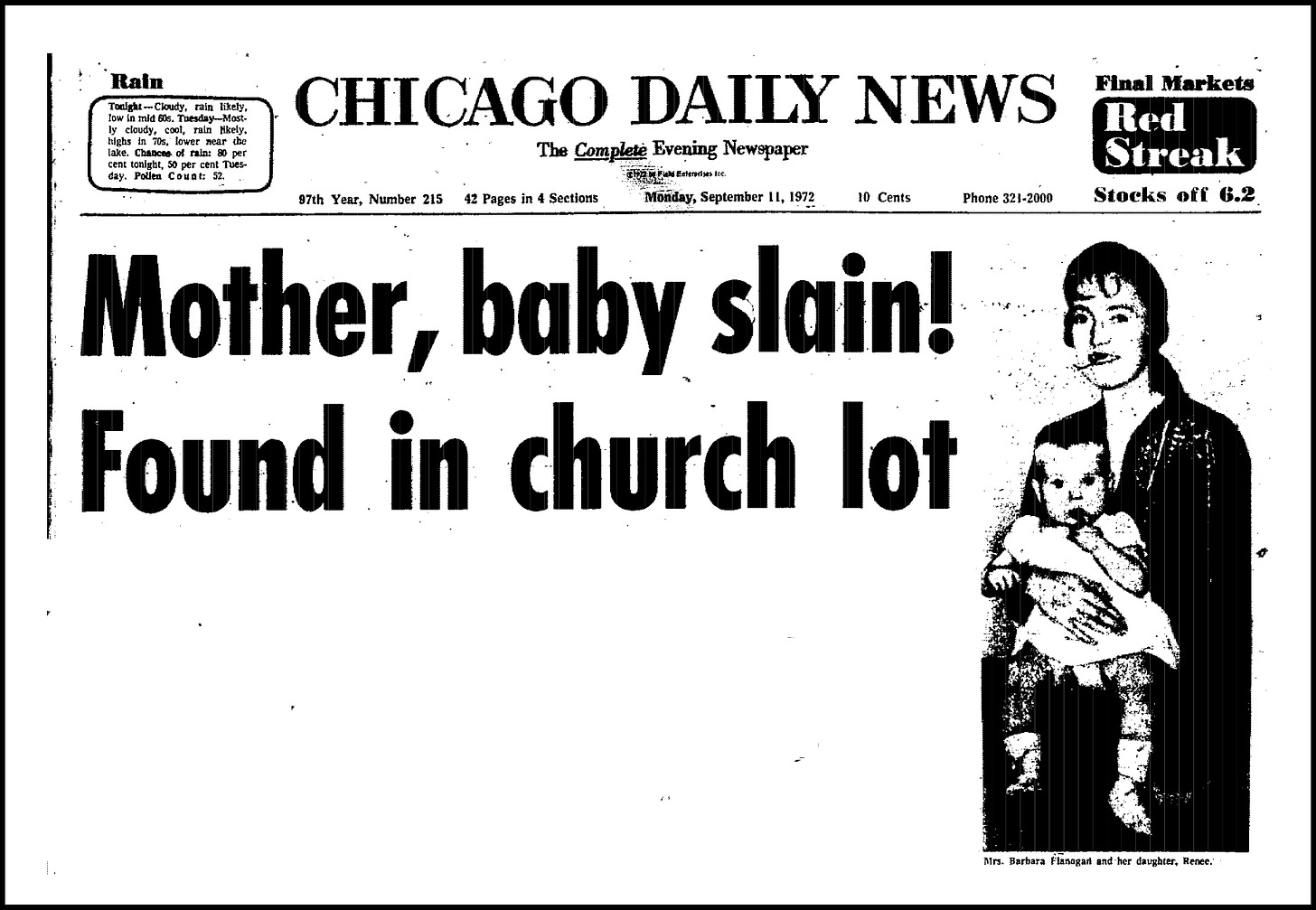

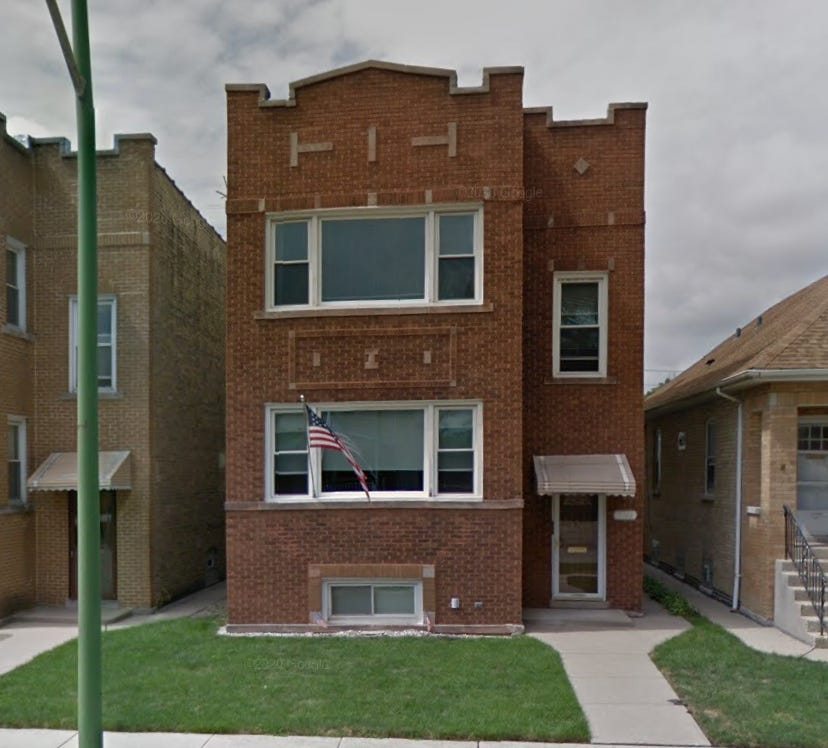






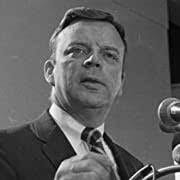





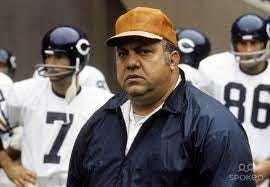
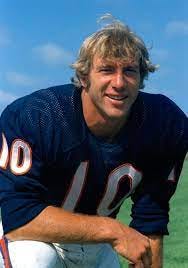


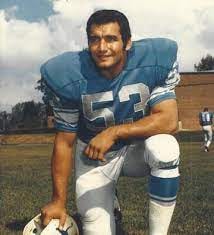
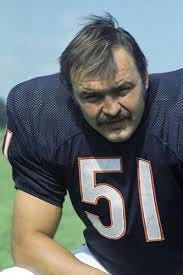



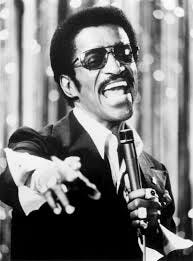







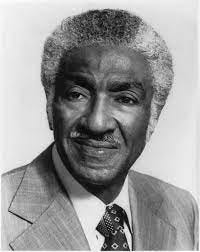

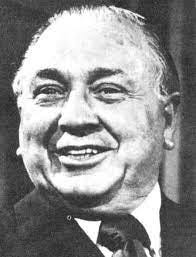




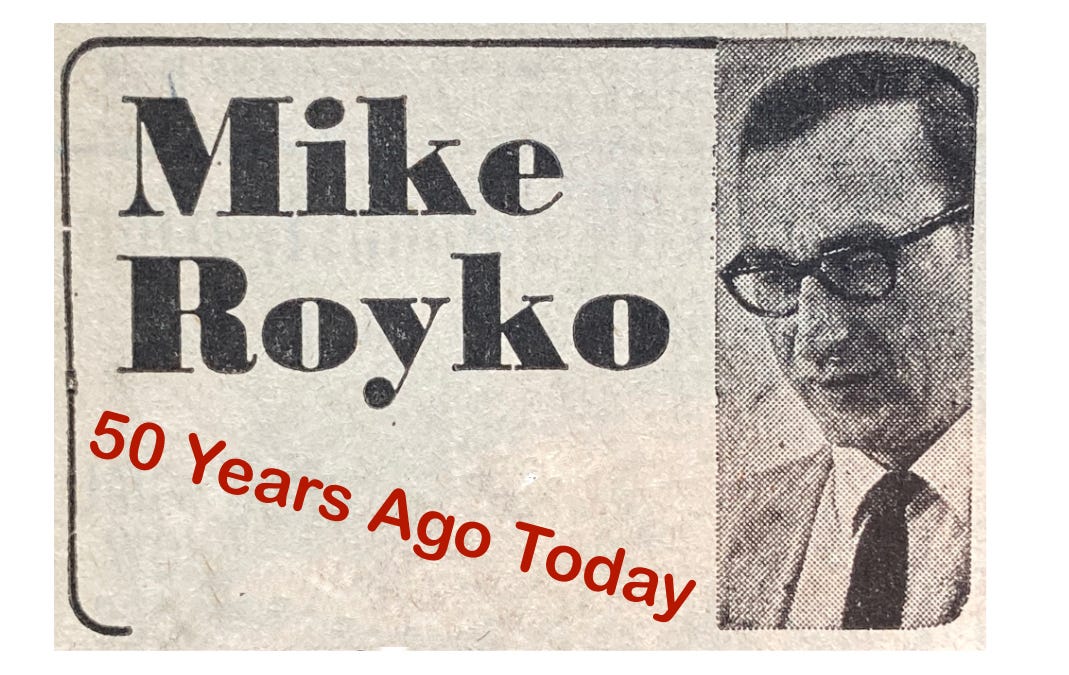
























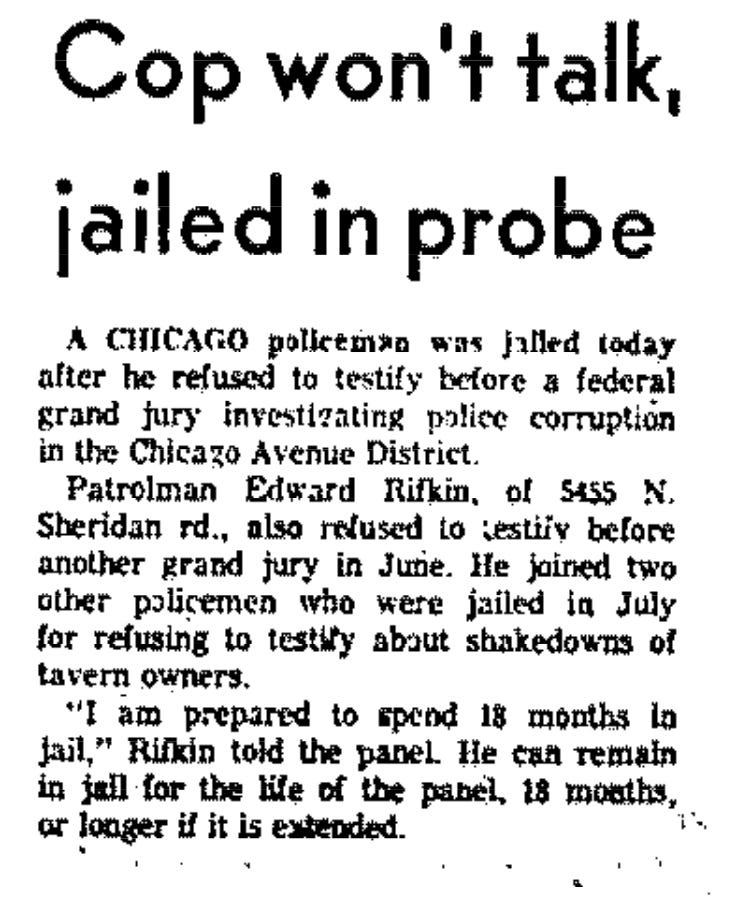

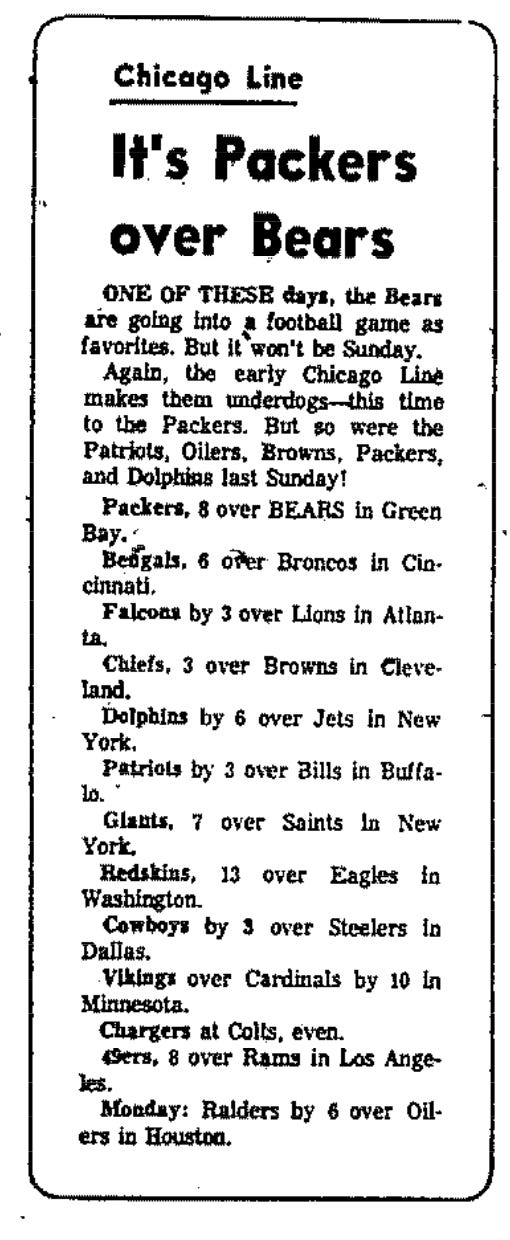











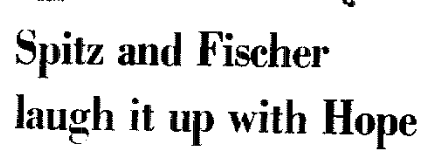






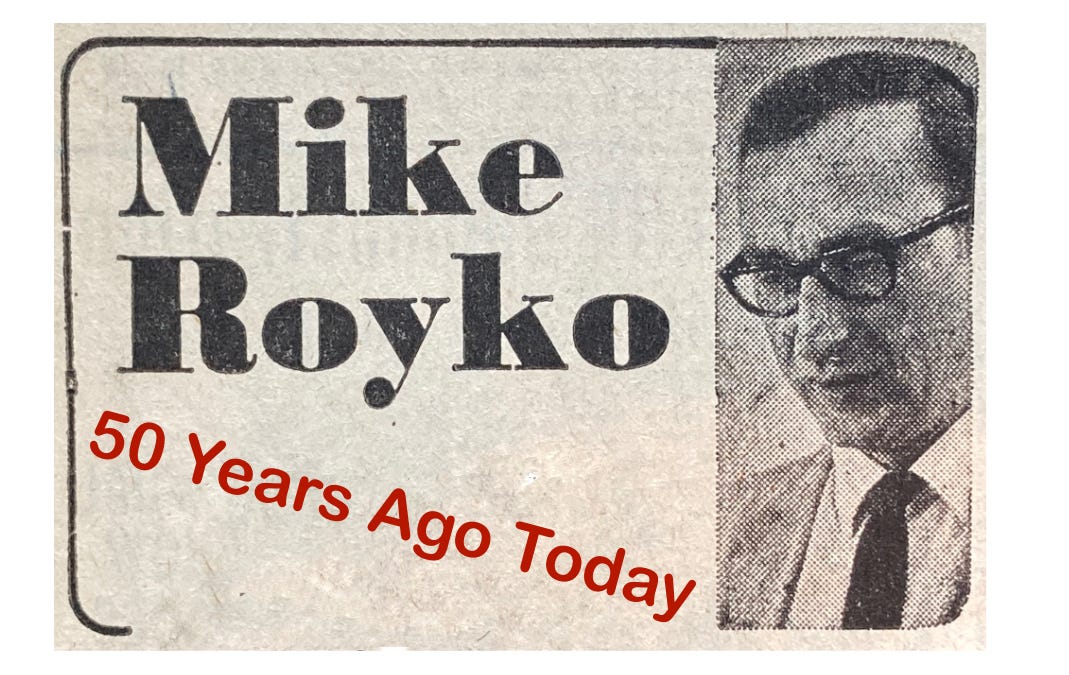







In regard to the item about the motel guard solving the killing, it should be Higgins Road, not Wiggins.
Thanks! Hopefully the edit function will let me fix that now.